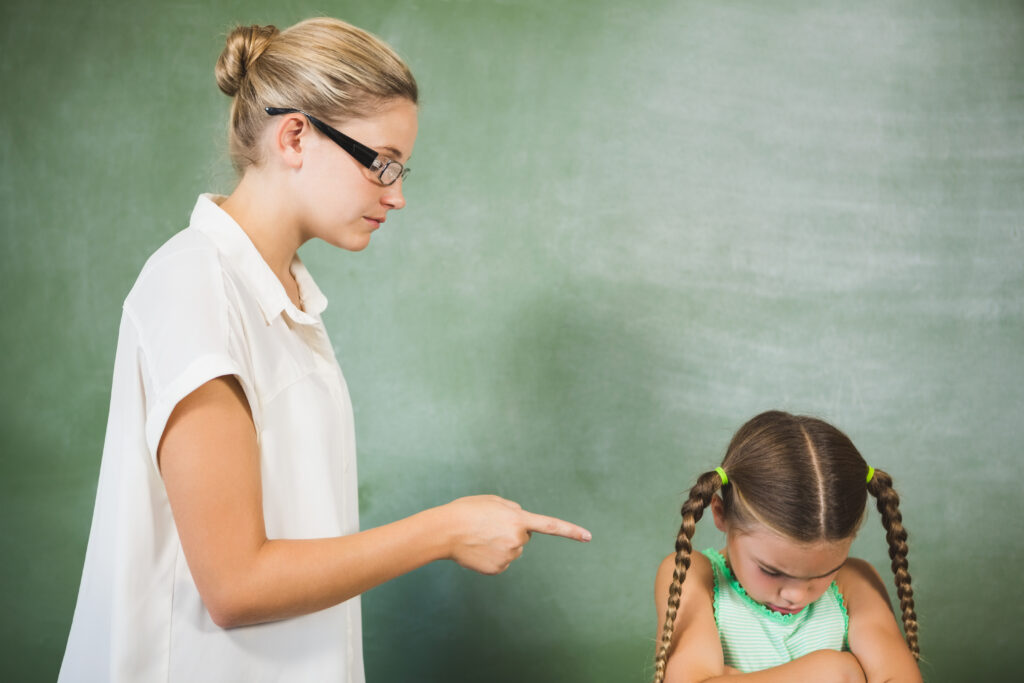Consider your classroom. Imagine your students right now. One in three of them has probably experienced bullying. What can you do about it as a teacher?
According to the National Center for Education, more than 20% of children report being bullied. This startling percentage is especially shocking in light of the numerous negative effects bullying may have on students’ wellness.
Targeted children frequently struggle with academic underachievement, sleep problems, anxiety, and despair. Not to mention the bullies themselves, who are significantly more likely to experience a wide range of issues that could persist throughout adulthood, from violent conduct to drug dependence.
What can you do as a teacher to have an impact? How do you foster a safe environment in the classroom while also implementing interventions to avoid bullying before it even starts? To develop these six tactics, we consulted professionals in mental health counseling and education.
Spread empathy and kindness
Children become targets for bullying when they are perceived as different from their peers by wearing the wrong clothes, being in a different class, or being overweight. When a child is perceived as different, they may be teased and subjected to verbal abuse or physical violence by their peers.
It’s important to teach children kindness and empathy before they enter the public school system because it is an area where bullying is rife. Students are less prone to bully others when they are able to explore concepts and situations from various angles.
Students should engage in activities that foster social-emotional learning starting at a young age. Discover strategies to teach kids about their own identities and the identities of others. Empathy and kindness are necessary for this, and experienced teachers feel these abilities can be taught.
Empathy is the capacity to imagine oneself in another person’s shoes, and teachers need to include this talent in their curriculum. Early identification work is necessary to help youngsters understand who they are, who everyone else is, and where they fit in the world.
Getting youngsters together and having a discussion about their differences is one method to do this. Give them the opportunity to resolve disputes, solve issues, and improve their understanding of those around them.

Provide chances for interaction
Do you want children under your care to feel safe and happy at school? Our children need safe spaces where they can make friends, talk through their feelings, develop their creative abilities, build their confidence, and pursue their interests — without fear of being bullied or singled out.
The best way to stop bullying is by creating opportunities for connection – whether it’s inside or outside of school hours. Let’s build communities where everyone is celebrated and belongs – because everyone deserves to feel safe when they come home.
Lessening bullying episodes and promoting healing for the targeted children can both be achieved in your classroom by fostering a feeling of community.
According to research, targeted children are better equipped to handle bullying when they feel connected to their classmates. Additionally, studies show that encouraging students to speak up and resist bullying behavior when they encounter it can cut down on future instances of bullying by more than 50%.
Nancy Beardall, who developed and implemented a bullying prevention curriculum in Newton Public Schools, asserts that “it’s all about connection.” “Students do better when they feel linked to their peers, their school, and their community.”
Create a space where kids may freely express themselves and feel heard in the classroom. Develop pupils’ capacity to speak up for both themselves and others. Encourage opportunities for positive reinforcement outside the classroom by assisting children in joining after-school activities that fit their interests and hobbies.
Spot "gateway behaviors"
Researchers have discovered that subtle behaviors frequently indicate the onset of bullying habits. These “gateway behaviors” are indicators that are frequently overlooked by educators who already have a lot on their plates. But if you can spot them at an early stage, there’s a chance you can stop bullying behavior from emerging later. Here are some crucial actions you should watch out for as a teacher:
- Eye rubbing
- continued glancing
- backward turning
- maliciously laughing
- Name-calling
- excluding or ignoring
- harming someone physically
- Spying
- Stalking
Even though these actions might not be considered bullying, taking action early may help to prevent them from developing into more serious issues. According to the research, these actions appear to be precursors to bullying, and if we can stop kids here, we’ll go a long way toward stopping the problem,” says Patterson.
Create context through the art
Young people can benefit much from the arts when learning to view problems from various angles. In order to have a discourse with kids about bullying, educators can use drama, literature, and the visual arts. This is done using the children’s book Each Kindness by Jacqueline Woodson, according to Erika Dawes, an early childhood literacy professor at Lesley.
According to Dawes, “Each Kindness is the narrative of a young girl who bullies a classmate.” It differs from other stories because it doesn’t have a happy conclusion. Students are consequently left with contradictory feelings. And then, it is the ideal time to start a dialogue because of this ambiguity.
Dawes leads an open circle discussion with children after reading to them. She draws attention to the concerns brought up in the narrative and fosters a welcoming environment for pupils to discuss bullying. She is able to contextualize bullying conduct in the classroom in this way without drawing attention to particular incidents.
Susan Patterson from the Graduate School of Education says: “To prevent bullying from spreading to the classroom, we must be even more vigilant if we live in a culture that tolerates it.”
Watch out for bullying of teachers
The fact that educators may also be bullies is a reality that most teachers are uncomfortable discussing. Additionally, pupils may suffer when teachers feel bullied by their peers.
According to Patterson, “there are schools where bullying occurs within the adult culture. “My students tell me that they experience bullying in the classes I teach and from other professors, assistant principals, and department heads. To prevent bullying from spreading to the classroom, we must be even more vigilant if we live in a culture that tolerates it.
Start by taking a look within your own classroom to curtail the spread of bullying from the leadership level down to kids. Avoid adding negativity to your teaching after a poor day or tense exchange with a coworker. Concentrate your efforts on creating a supportive, upbeat, and positive learning atmosphere. And make sure to speak out for yourself when concerns in your school’s culture threaten your capacity to be a fully present and productive educator by speaking with managers or HR specialists.

Take part in mock situations
Theorizing on how to stop bullying in schools and deal with it is one thing. It’s quite another to be the first to witness it. It can be challenging for new instructors to know exactly how they’ll behave when bullying situations emerge without proper pre-service preparation.
Faculty at Lesley University’s Graduate School of Education is taking action. The experience is currently being recreated for pre-service teachers in a mixed-reality lab, according to Maureen Creegan-Quinquis, who oversees the creative arts and learning department at Lesley University.
Pre-service teachers are spectators in a bullying scenario in the mixed-reality lab. They are expected to react to the problem quickly and help find a solution. Creegan-Quinquis claims that participants are frequently taken aback by how challenging the exercise may be.
For many of them, this is the first time they encounter bullying in person and be asked to work through their emotions, according to Creegan-Quinquis. “What an electric feeling that is when you’re able to witness it.”
Conclusion
Teachers play a crucial role in the fight against school bullying. There are several effective strategies teachers can follow to deal with bullying in school. These strategies range from teaching empathy and kindness to students to learning to recognize telltale signs of bullying in children.
Visit our website to learn more about measures teachers can take to prevent bullying.






